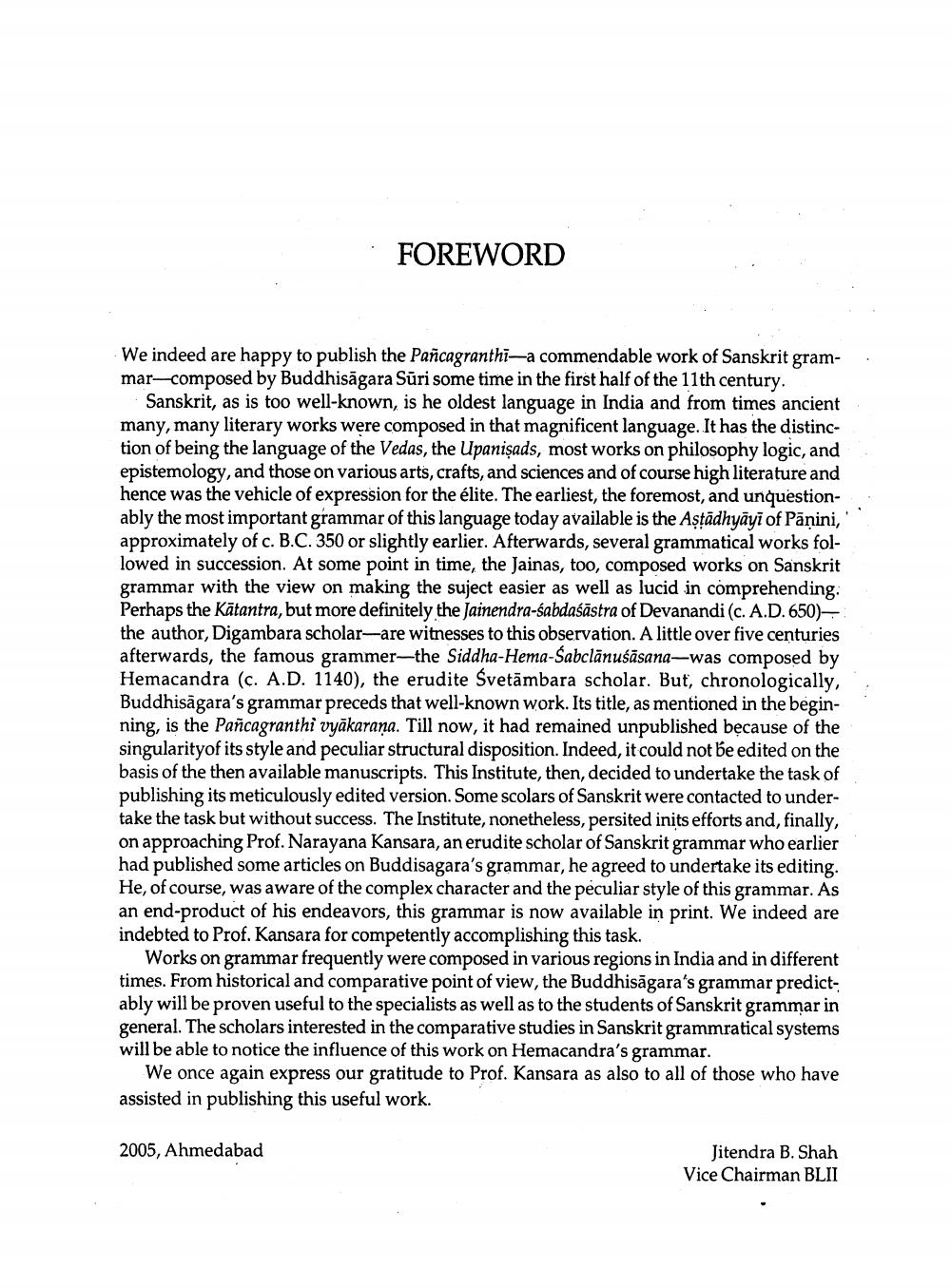________________ FOREWORD We indeed are happy to publish the Pancagranthi-a commendable work of Sanskrit gram- . mar-composed by Buddhisagara Suri some time in the first half of the 11th century. Sanskrit, as is too well-known, is he oldest language in India and from times ancient many, many literary works were composed in that magnificent language. It has the distinction of being the language of the Vedas, the Upanisads, most works on philosophy logic, and epistemology, and those on various arts, crafts, and sciences and of course high literature and hence was the vehicle of expression for the elite. The earliest, the foremost, and unquestionably the most important grammar of this language today available is the Astadhyayi of Panini, approximately of c. B.C. 350 or slightly earlier. Afterwards, several grammatical works followed in succession. At some point in time, the Jainas, too, composed works on Sanskrit grammar with the view on making the suject easier as well as lucid in comprehending: Perhaps the Katantra, but more definitely the Jainendra-sabdasastra of Devanandi (c. A.D. 650) the author, Digambara scholar-are witnesses to this observation. A little over five centuries afterwards, the famous grammer-the Siddha-Hema-Sabclanusasana-was composed by Hemacandra (c. A.D. 1140), the erudite Svetambara scholar. But, chronologically, Buddhisagara's grammar preceds that well-known work. Its title, as mentioned in the beginning, is the Pancagranthi vyakarana. Till now, it had remained unpublished because of the singularityof its style and peculiar structural disposition. Indeed, it could not be edited on the basis of the then available manuscripts. This Institute, then, decided to undertake the task of publishing its meticulously edited version. Some scolars of Sanskrit were contacted to undertake the task but without success. The Institute, nonetheless, persited inits efforts and, finally, on approaching Prof. Narayana Kansara, an erudite scholar of Sanskrit grammar who earlier had published some articles on Buddisagara's grammar, he agreed to undertake its editing. He, of course, was aware of the complex character and the peculiar style of this grammar. As an end-product of his endeavors, this grammar is now available in print. We indeed are indebted to Prof. Kansara for competently accomplishing this task. Works on grammar frequently were composed in various regions in India and in different times. From historical and comparative point of view, the Buddhisagara's grammar predictably will be proven useful to the specialists as well as to the students of Sanskrit grammar in general. The scholars interested in the comparative studies in Sanskrit grammratical systems will be able to notice the influence of this work on Hemacandra's grammar. We once again express our gratitude to Prof. Kansara as also to all of those who have assisted in publishing this useful work. 2005, Ahmedabad Jitendra B. Shah Vice Chairman BLII




